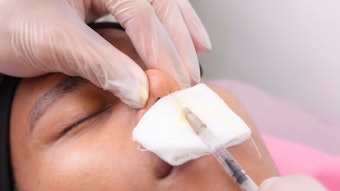
“Adverse events caused by intraarterial administration of CaHA-based fillers still lack a suitable antidote.” This was the conclusion of investigators following a cadaveric study on the use of sodium thiosulfate (STS) for intraarterial degradation of calcium hydroxylapatite (CaHA), published in the May 2021 issue of the Aesthetic Surgery Journal.
Mariya Yankova, MD, et al, sought to determine whether CaHA-based fillers can be trans-arterially dissolved by sodium thiosulfate (STS) when evaluated in cadaveric and in vitro models. The experiment was based on the ability of hyaluronidase to dissolve hyaluronic acid fillers when applied trans-arterially as well as previous studies showing that STS can effectively disintegrate CaHA if it is in direct contact with the material.
The researchers filled human cadaveric facial arterial segments with 0.2 cc of a commercially available CaHA product and submerged them for 24 hours in four different STS-containing solutions: 10 cc STS (300 mg/cc) (pure, 1:1 dilution, 1:2 dilution), 0.9% saline and 10 cc STS (300 mg/cc) and 300 IU (bovine) hyaluronidase in a 1:1 ratio.
After 24 hours, intraarterial CaHA was detected in all the human facial artery segments independent of the STS concentration employed. Submerging the arterial segments in STS (300 mg/cc) and 300 IU (bovine) hyaluronidase (1:1 ratio) also did not dissolve the intraarterial CaHA product. However, in an in vitro experimental model, increasing concentrations of STS did result in increased disintegration of CaHA.
The results of the study indicate that “STS is limited in its potential to dissolve intraarterial CaHA of cadaveric human facial arteries, despite the fact that it appears effective when in direct contact with the CaHA,” the authors wrote.











